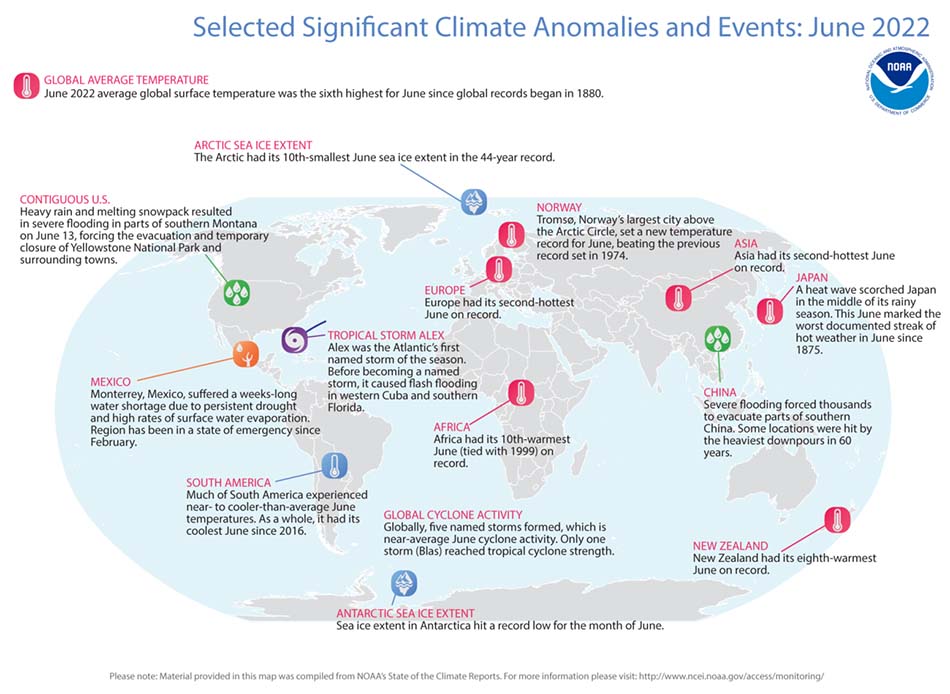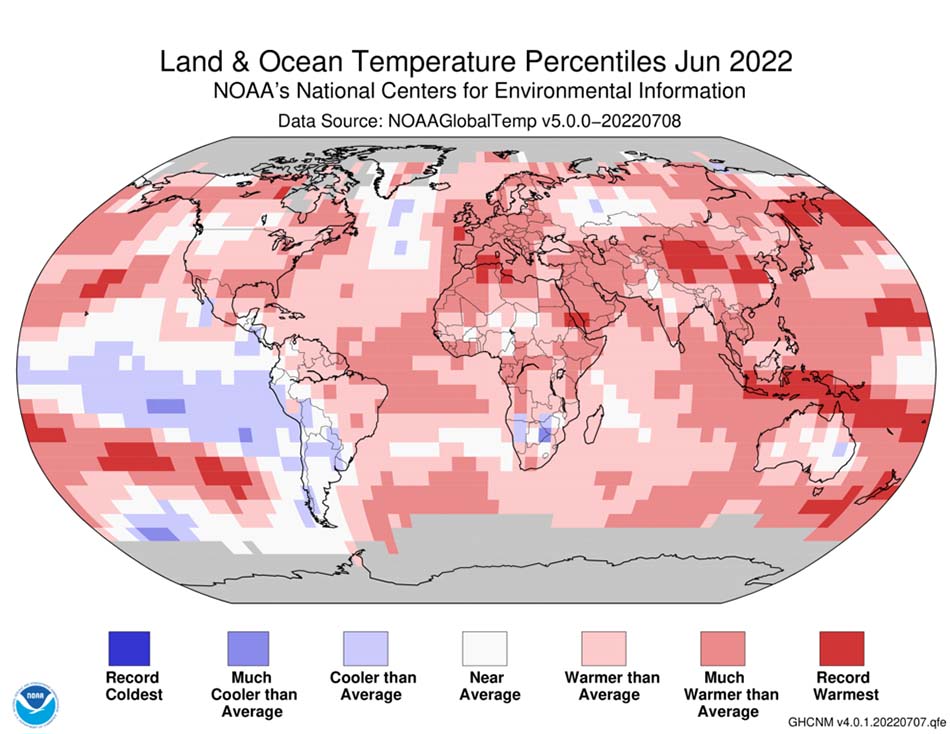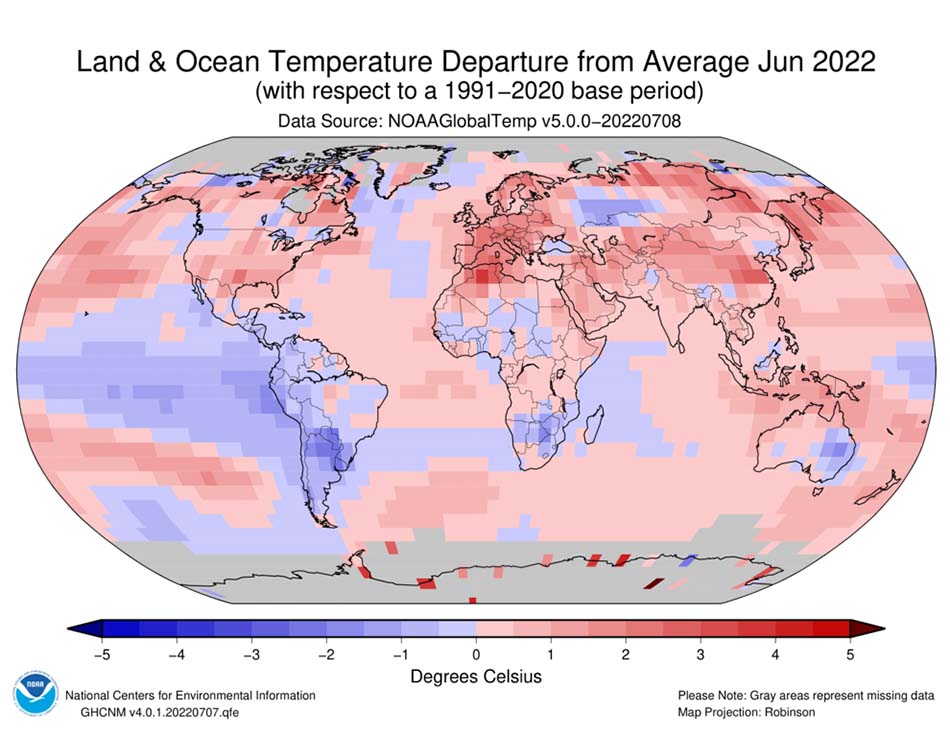Globally, June 2022 was the sixth-warmest June in the 143-year NOAA record. The year-to-date (January-June) global surface temperature was also the sixth warmest on record.
According to NCEI’s Global Annual Temperature Outlook, there is a greater than 99% chance that 2022 will rank among the 10-warmest years on record but only an 11% chance that it will rank among the top five.

This monthly summary, developed by scientists at NOAA’s National Centers for Environmental Information, is part of the suite of climate services NOAA provides to government, business, academia and the public to support informed decision-making.
Monthly global temperature

The June global surface temperature was 0,87°C above the 20th-century average of 15,5°C. This ranks as the sixth-warmest June in the 143-year record.
June 2022 marked the 46th consecutive June and the 450th consecutive month with temperatures, at least nominally, above the 20th-century average. The 10 warmest Junes on record have all occurred since 2010.
The Northern Hemisphere land-only surface temperature for June was 1,56°C above average, making it the second warmest on record after June 2021. Europe had its second-warmest June on record, largely due to an unusually early heatwave heat wave coming from North Africa. Spain and France recorded temperatures not typically seen until July or August, breaking many temperature records for the month. Asia also had its second-warmest June on record.
Temperatures were above average throughout most of North America, Europe, and Asia and across parts of northern Africa, the Arabian Peninsula, and western and northern Oceania. Parts of China, the Middle East, and northern Africa experienced record-warm temperatures for June. Sea surface temperatures were above average across much of the northern, western, and southwestern Pacific, as well as parts of the Atlantic and eastern Indian oceans.
Temperatures were near- to cooler-than-average across parts of western and southern South America and in small areas of eastern Australia, western Russia, and southern Africa.
Consistent with La Niña, sea surface temperatures were below average over much of the south-central, central, and eastern tropical Pacific. There were no areas with record-cold June temperatures in 2022.

Sea ice
Globally,June 2022 saw the second-lowest June sea ice extent on record. Only June 2019 had a smaller sea ice extent.

June 2022 Arctic (left) and Antarctic (right) sea ice extent. Courtesy of NSIDC and NOAA.
Arctic sea ice extent in June averaged 4,19-million square miles, which is 347 000 square miles — roughly the size of Sweden, Norway, and Denmark combined — below the 1981-2010 average and the 10th-smallest June extent in the 44-year record.
According to an analysis by the National Snow and Ice Data Center(NSIDC), regional sea ice extent was below average in the Barents, Chukchi, East Siberian, and Kara seas and Hudson Bay, while conditions in Baffin Bay were near normal. The 10-smallest June Arctic sea ice extents have occurred since 2010.
Antarctic sea ice extent for June was a record low at 4,69-million square miles, or about 471 000 square miles below average. Following a below-average Antarctic sea ice extent in May, sea ice growth in June was slower than average.
Global tropical cyclones
June 2022 produced five named storms across the globe, which is near-normal activity for June. Only one of those, Hurricane Blas, reached tropical cyclone strength (74 mph) in June, but two storms that formed in June later reached cyclone strength in July. The global cyclone activity for January through June remains near normal by most metrics.
Although it was only a tropical storm for about 30 hours, Tropical Storm Alex was the Atlantic’s first named storm of the season. The East Pacific had two named storms in June, which is near-average activity. The West Pacific, which has below-average year-to-date activity, only had one named storm this month.
Featured picture courtesy of Jennifer Fulford

